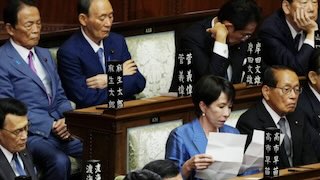Jul 09 (NHK) - Japanese police say former Prime Minister Abe Shinzo died from loss of blood after a bullet damaged an artery under his collarbone.
Police carried out an autopsy on Abe's body through early Saturday.
They say the bullet went through Abe's upper left arm and damaged a blood vessel under his collarbone.
The police say the attacker fired a gun from close range, apparently with the intent to kill.
Abe was fatally shot on Friday morning as he was making a stump speech near a railway station in the western city of Nara.
Police arrested the 41-year-old suspect, Yamagami Tetsuya, on the spot.
The unemployed man, a resident of Nara, told police he held a grudge against a certain organization, and believed Abe was connected with it.
The suspect is quoted as saying his grudge is not connected to Abe's political beliefs.
Police say the gun used in the attack was self-made, and measured about 40 centimeters in length. They say they seized several more guns with similar features from the suspect's home.
Police say the attack was likely well planned.















